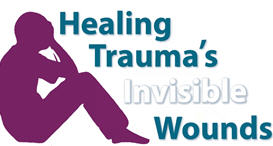Mental Health Month – May
 MENTAL HEALTH AMERICA has been observing May as Mental Health Month since 1949. Their platform for 2012 is a call to action to recognize and care for mental illness.
MENTAL HEALTH AMERICA has been observing May as Mental Health Month since 1949. Their platform for 2012 is a call to action to recognize and care for mental illness.
“Do More for 1 in 4” campaign
According to a 2005 National Institute of Mental Health finding, one in four American adults live with a diagnosable, treatable mental health condition. As many as 50 percent of people living with a mental health condition never seek or receive help due to stigma, lack of information, cost or lack of health insurance. Many people may be reluctant to ask for help or don’t know where to find it. You can make a difference by helping someone you know find treatment.
You may know someone: common disorders
- Attention deficit hyperactivity disorder (ADHD). Symptoms can be variable and either situational or constant.
- Anxiety disorders. Includes obsessive-compulsive disorder, panic disorder, posttraumatic stress disorder, phobia, etc.
- Bipolar disorder. Also known as manic depression, it involves mood swings from excessively high and/or irritable to sad and hopeless, mixed with normal moods.
- Clinical depression. It is characterized by persistent changes in mood, behavior and feelings that disrupt day-to-day life.
How to support someone close to you
- Educate yourself about the diagnosis, illness symptoms and side effects from treatments and medications.
- Recognize that your family member or friend may be scared and confused after receiving a diagnosis.
- Recognize that it may take time to find the medications and dosages that work.
- Always respect the individual’s need for privacy.
Additional focus: trauma
A second platform for Mental Health America during this awareness initiative is called Healing Trauma’s Invisible Wounds.
Until recently, trauma survivors were largely unrecognized by the formal treatment system. The costs of trauma and its aftermath to victims and society were not well documented. Inadvertently, treatment systems may have frequently retraumatized individuals and failed to understand the impact of traumatic experiences on their general and mental health.
A traumatizing experience can happen to an individual at any age, or to an entire community. The most common causes of trauma include:
- Living under threat
- Childhood sexual, physical or emotional abuse or neglect
- Experiencing violence
- Being bullied
- Living through a natural disaster, war or other form of upheaval
- Serving in combat
- Witnessing something terrible happen to another person or group of people
The good news is that the invisible wounds caused by traumatic experiences can heal. With the proper treatment, support and self-care, recovery is possible.
As a society, we are just beginning to deal with trauma—bringing it out of the shadows, finding new ways of healing its wounds and casting off the shame that prevents trauma survivors from seeking help.
Mental Health America can help those in need find treatment, support groups, medication information and more on its website, www.mentalhealthamerica.net. If you or someone you know is in crisis, please call your local crisis center or 1-800-273-TALK (8255) to reach a 24-hour crisis center.

